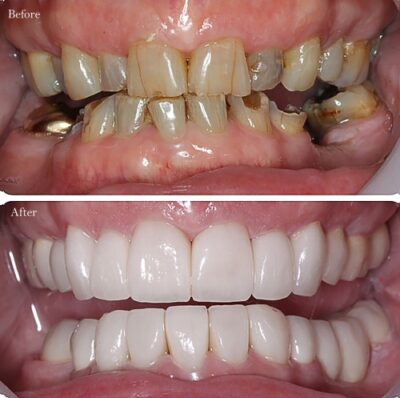The 6-Minute Rule for Dental Sense
Table of Contents5 Simple Techniques For Dental SenseHow Dental Sense can Save You Time, Stress, and Money.Some Known Facts About Dental Sense.A Biased View of Dental Sense
are clinical devices surgically dental implanted right into the jaw to bring back a person's capacity to chew or their appearance. They provide assistance for fabricated (phony) teeth, such as crowns, bridges, or dentures. When a tooth is shed as a result of injury or illness, a person can experience complications such as quick bone loss, malfunctioning speech, or adjustments to eating patterns that cause discomfort.Oral dental implant systems include an oral implant body and dental implant joint and may also consist of an abutment fixation screw. Professional teeth whitening. The oral implant body is surgically put in the jawbone instead of the tooth's root. The oral implant joint is usually connected to the implant body by the joint fixation screw and expands with gums into the mouth to sustain the attached artificial teeth
(https://www.avitop.com/cs/members/dentalsense1.aspx)Structure of The Dental Implant System picking oral implants, talk to your dental company about the possible benefits and risks, and whether you are a prospect for the procedure. Things to think about: Your general wellness is an essential consider establishing whether you are an excellent prospect for oral implants, the length of time it will require to recover, and the length of time the dental implant may stay in location.
Cigarette smoking might impact the healing process and reduce the lasting success of the implant. The healing procedure for the dental implant body might take a number of months or longer, during which time you commonly have a short-term joint instead of the tooth. the oral implant procedure: Meticulously follow the dental hygiene directions provided to you by your oral company.
The smart Trick of Dental Sense That Nobody is Discussing
Implant failure can result in the requirement for an additional operation to take care of or change the dental implant system. Recovers the capacity to eat Brings back cosmetic appearance Helps maintain the jawbone from diminishing due to bone loss Maintains the health of the surrounding bone and gum tissues Aids maintain surrounding (close-by) teeth steady Enhances quality of life Damage to surrounding natural teeth throughout implant placement Injury to the surrounding cells during surgery, such as sinus perforation Injury throughout surgical procedure (as an example, crack of surrounding jawbone) Poor function, such as seeming like the teeth do not attack together generally A feeling that the tooth is loosened or twisting in position arising from an abutment screw loosening up Implant body failure (looseness of the implant body) because of systemic infection, which may be a lot more most likely in people with unchecked diabetics issues due to local infection in bone and periodontals sustaining the implant body because of postponed healing, which might be more most likely in patients who smoke Trouble cleaning the gum tissues around the implant, leading to inadequate dental hygiene Neglected periodontal illness Post-surgical numbness due to nerve impingement or damage Constantly alert healthcare companies and imaging technicians that you have oral implants before any kind of magnetic resonance imaging (MRI) or x-ray procedures.
FDA is not familiar with any type of unfavorable events reported for MRI or x-ray procedures with oral implants. Oral implants systems are commonly made from products that follow worldwide consensus criteria of the International Company for Standardization (ISO) or ASTM International. These standards have details of what makes a safe product.

A dental implant is a framework that changes a missing tooth. With screw-like tools, the doctor inserts a dental implant into the jawbone, and it acts as a support for a synthetic tooth, called a crown.
The Definitive Guide for Dental Sense
Some people are not eligible for dental implant surgical treatment. It is for dental specialists to operate individuals with: intense illnessuncontrollable metabolic diseasebone or soft tissue disease or infectionIf these concerns are solved, an individual can have the surgical procedure. In, dental specialists abstain from operating on individuals with: If people with news any of the above go through oral implant surgery, there is a higher threat of the dental implant failing.

Dental dental implant surgical treatment is a personalized process. Offer you time to heal. Connect the article and final crown, bridge or denture.
Next off, your specialist will meticulously put the dental implant right into your jaw. Ultimately, your specialist will rearrange your gums and close the incision with stitches. If your implant is near the front of your mouth, your dental professional will make a short-term tooth for you to put on up until you heal. This way, you will not have a space in your smile while you recuperate.
The Single Strategy To Use For Dental Sense
During the recovery stage, your jawbone needs to fuse to the oral implant. This procedure can take anywhere from three to nine months.
Once your dental implant heals, your dental professional can connect the joint (tiny connector post) and your last reconstruction (crown, bridge or denture). This typically takes about one hour to finish and may require a 2nd minor surgical procedure. You shouldn't feel any pain during your dental implant treatment due to the fact that your provider will certainly make use of medication to numb your periodontals.